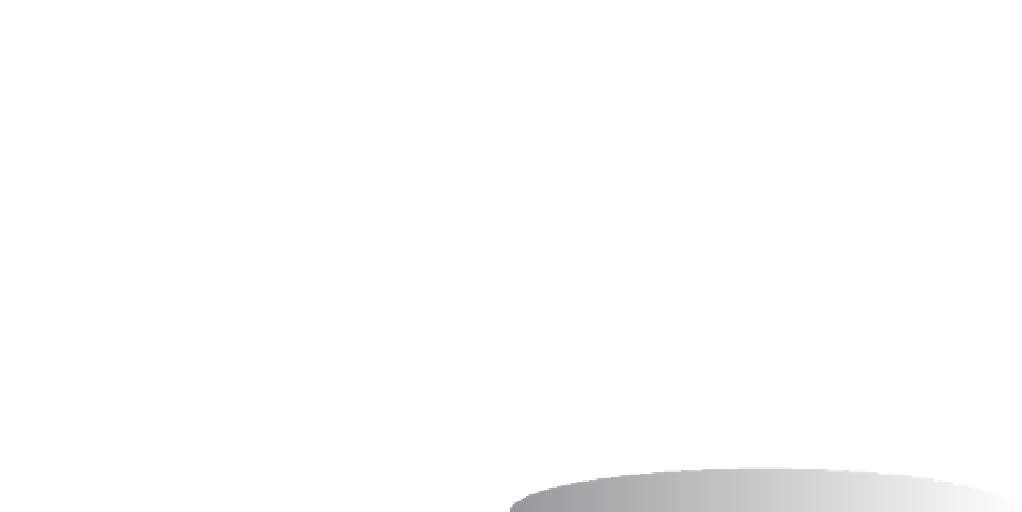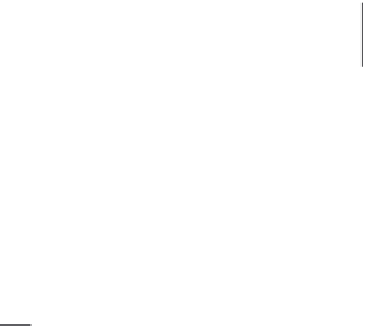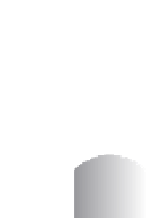Environmental Engineering Reference
In-Depth Information
The maximum width of the circulation cell, 2
y
, occurs
when
x
= 0 and Equation (5.120) gives
excavated and backfilled with gravel. Onsite treatment
is usually required before water can be reinjected to the
aquifer, discharged to a receiving water body, used
for irrigation purposes, or released to surface sanitary
systems. The majority of inorganic contaminants are
metals that can be removed by precipitation (through
lime addition or aeration), volatile organic contami-
nants can be removed by air stripping, less volatile
organics can be removed by sorption onto activated
carbon or biological treatment, and special methods,
such as ultraviolet light and electron beams, can be used
for the most refractory organic compounds. A typical
aboveground view of a pump-and-treat system is shown
in Figure 5.27.The pump, piping, and treatment systems
are shown in Figure 5.27a, and the discharge of treated
water to a nearby lagoon is shown in Figure 5.27b.
many pump-and-treat systems have performed
poorly in practice, even though their design was based
on sound principles. Reasons commonly cited for the
poor performance of pump-and-treat systems are the
presence of hydrogeologic controls, such as zones of low
hydraulic conductivity, and the presence of residual
nAPLs in the water-bearing units. Contaminant removal
rates are usually high in the initial stage of operation;
however, this is usually followed by a second stage in
which contaminant removal rates are limited by the dif-
fusion rate of the contaminant trapped in zones of low
hydraulic conductivity. This second-stage process can
cause the contaminant concentrations in the pumped
water to remain marginally contaminated and approxi-
mately constant for years or even decades, possibly
resulting in a failure of the pump-and-treat system to
meet the target levels for groundwater remediation
q Hy
Q
1
2
y d
x d
/
y d
x d
/
1
2
−
=
0
+
π
tan
−
1
tan
−
1
/
+
1
/
−
1
w
( .
0 02 30
86 4
1
2
)(
)
y
.
13 7
0 13 7 1
y
/
.
/
/13 7 1
y
13 7
.
1
2
−
=
−
1
−
1
+
tan
tan
π
/
.
+
0
. −
which can be written as
1
2
[
]
=
( )
−
(
)
0 0951
.
χ
+
0 159
.
tan
−
1
χ
tan
−
1
−
χ
(5.122)
where
y
13 .
χ=
The only feasible solution of Equation (5.122) is
χ
= 1.75, which gives
y
= 24.0 m. The width of the circu-
lation cell is 2 × 24.0 = 48.0 m, which is greater than the
plume width of 25 m. Therefore, the plume is entirely
contained within the doublet when the injection and
recovery wells are spaced 27.4 m apart.
A typical pump-and-treat system is illustrated in
Figure 5.26. Contaminated water can be pumped using
wells, drains, buried perforated pipe, and/or trenches
clean
water
water treatment
system
holding
tank
ground surface
water table
polluted groundwater
Figure 5.26.
Pump-and-treat system.
Source
: U.S. Environmental Protection Agency (2001).






























Search WWH ::

Custom Search